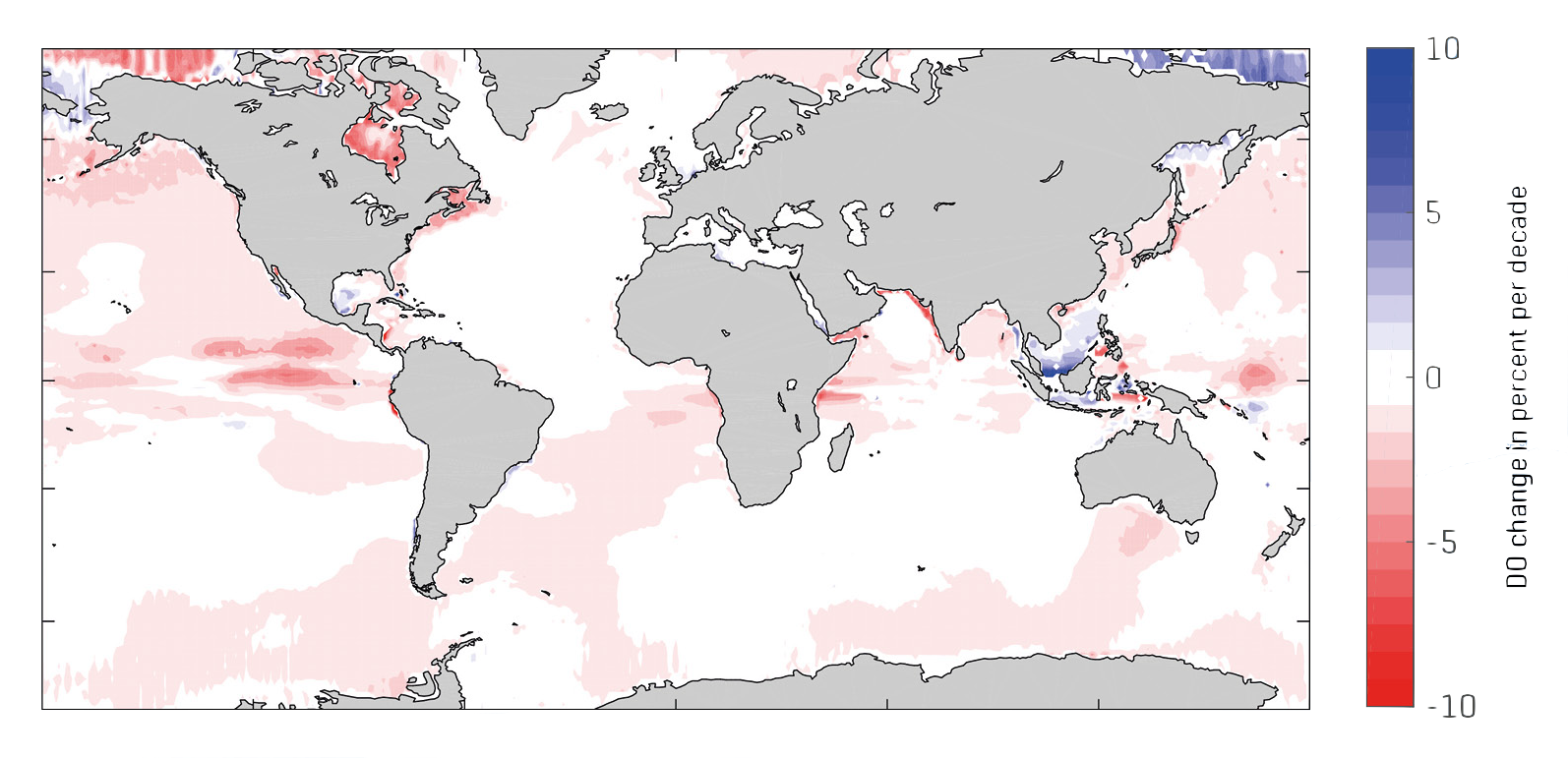
Researchers complain that the oxygen problem doesn’t get the attention it deserves, with ocean acidification and warming grabbing the bulk of both news headlines and academic research. Just this April, for example, headlines screamed that global surface waters were hotter than they have ever been — a shockingly balmy average of 70 degrees F. That’s obviously not good for marine life. But when researchers take the time to compare the three effects — warming, acidification, and deoxygenation — the impacts of low oxygen are the worst.
Modelling the net impacts of the three factors — solubility, mixing, and microbiology — has proven tricky.
Solubility: First, the laws of physics dictate that warmer water can hold less dissolved gas than cooler water (this is why a warm soda is less fizzy than a cold one). As our world warms, the surface waters of our oceans lose oxygen, in addition to other dissolved gases. This simple solubility effect accounts for about half of the observed oxygen loss seen so far in the upper 1,000 meters of the ocean.
Mixing: Deeper down, oxygen levels are largely governed by currents that mix surface waters downward, and this too is being affected by climate change. Melting ice adds fresh, less-dense water that resists downward mixing in key regions, and the high rate of atmospheric warming at the poles, as compared to the equator, also dampens winds that drive ocean currents.
Microbiology: Finally, bacteria living in the water, which feed off phytoplankton and other organic gunk as it falls to the seafloor, consume oxygen. This effect can be massive along coastlines, where fertilizer runoff feeds algae blooms, which in turn feed oxygen-gobbling bacteria. This creates ever more “dead zones,” including the infamous one in the Gulf of Mexico.